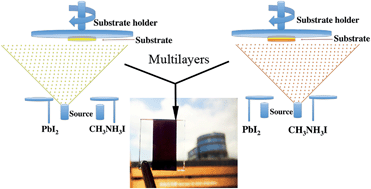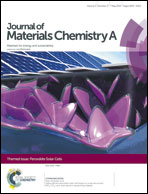Efficiency enhancement by defect engineering in perovskite photovoltaic cells prepared using evaporated PbI2/CH3NH3I multilayers†
Abstract
We report, for the first time, on the synthesis of perovskite films by thermal annealing of evaporated lead(II) iodide (PbI2)/methylammonium iodide (CH3NH3I) multilayers. Detailed characterization of the resulting films is presented. Our work demonstrates that compact, high quality and uniform perovskite films can be grown using this technique. Optimization of the device structure was achieved by careful design of the layer thickness and the number of PbI2/CH3NH3I pairs used in the formation of the absorber layer. Utilizing additional annealing steps in a controlled atmosphere was shown to result in significant improvement in the device performance. Our experimental data indicate that O2 treatments may result in substantial reduction in the trap density of the device and thereby significant improvement in the lifetimes of the carriers. A high power conversion efficiency (PCE) of 12.5% was recorded for the champion device.

- This article is part of the themed collection: Perovskite Solar Cells

 Please wait while we load your content...
Please wait while we load your content...